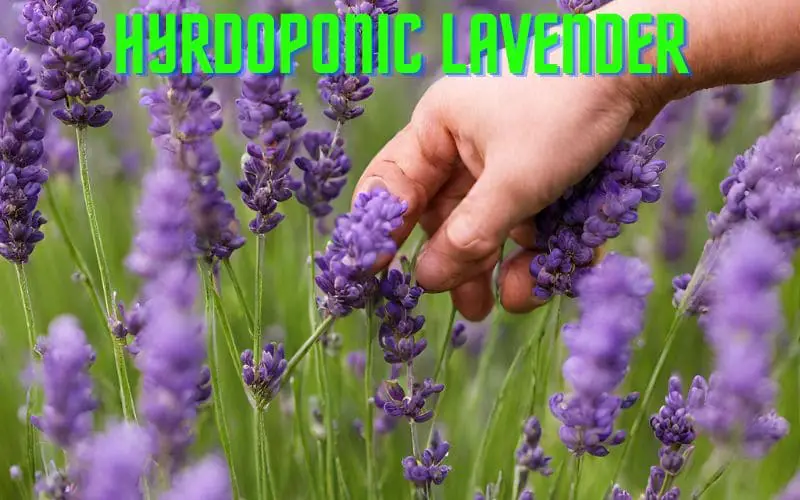5 Essential Tips For Growing Hydroponic Lavender The Best Way

Introduction
Are you ready to take your gardening skills to the next level? Hydroponic lavender offers a unique and rewarding experience for plant enthusiasts. In this article, we’ll explore the essential tips and techniques for successfully growing lavender hydroponically. From setting up a hydroponic system to harvesting your lavender, you’ll gain valuable insights into this innovative approach to herb cultivation. Let’s dive in and unlock the secrets of hydroponic lavender gardening!
Hydroponic Lavender Setup
1. Learn how to set up a hydroponic system to grow lavender indoors without soil.
Hydroponic systems offer an innovative and efficient way to grow lavender indoors without the need for soil. By harnessing the power of nutrient-rich water solutions, you can create an optimal environment for robust lavender growth. Let’s take a look at the steps for setting up a successful hydroponic system for lavender plants.
- Choose the Right Container: Select a suitable reservoir to hold the nutrient solution. It should be opaque to prevent algae growth and large enough to accommodate the root system of your lavender plants.
- Select the Growing Medium: Opt for an inert, lightweight growing medium that allows ample air and water circulation. Examples include perlite, vermiculite, or coconut coir.
- Prepare the Nutrient Solution: Use a balanced nutrient solution specifically formulated for hydroponic lavender cultivation. Ensure that it contains essential macronutrients like nitrogen, phosphorus, and potassium, as well as micronutrients such as calcium, magnesium, and sulfur.
- Monitor pH and EC Levels: Regularly check and adjust the pH and electrical conductivity (EC) of the nutrient solution to maintain optimal conditions for nutrient uptake.
- Provide Adequate Lighting: Install grow lights that emit the appropriate spectrum for different growth stages of lavender. Consider using LED or fluorescent lights to mimic natural sunlight.
- Maintain Proper Air Circulation: Set up fans or air pumps to ensure adequate ventilation and prevent mold and mildew growth.
- Implement a Nutrient Delivery System: Choose a suitable method to deliver the nutrient solution to the root zone, such as a drip system, ebb and flow system, or nutrient film technique (NFT).
- Support Healthy Root Growth: Encourage the development of strong root systems by maintaining proper oxygen levels in the root zone. Consider using air stones or diffusers to aerate the nutrient solution.
Best Lavender Varieties for Hydroponics
2. Discover the best lavender varieties that thrive in hydroponic growing environments.
When it comes to hydroponic lavender cultivation, selecting the best varieties is essential for a thriving garden. Let’s dive deeper into the top lavender varieties that are well-suited for thriving in soilless hydroponic systems:
- Lavandula angustifolia (English Lavender)
- – A popular and versatile variety, English lavender adapts well to hydroponic environments. It offers a delightful fragrance and is known for its calming properties.
- Lavandula x intermedia (Lavandin)
- – With a stronger scent and larger blooms, Lavandin is ideal for hydroponic cultivation. Its robust nature and pleasant aroma make it a favorite choice for hydroponic lavender gardens.
- Lavandula stoechas (Spanish Lavender)
- – Known for its unique pineapple-shaped blooms and aromatic essence, Spanish lavender thrives in hydroponic systems. Its vibrant appearance adds a colorful touch to any hydroponic garden.
These top lavender varieties provide a diverse range of characteristics, making them perfect for hydroponic growing environments. Their adaptability, fragrance, and visual appeal contribute to a flourishing hydroponic lavender garden.
Hydroponic Nutrient Solutions for Lavender
3. Understand the ideal nutrient solutions for feeding lavender plants in a hydroponic system.
Feeding lavender plants in a hydroponic system requires careful attention to the nutrient solutions. By understanding the specific nutrient requirements, you can optimize the growth and vitality of your hydroponic lavender. Let’s explore some of the nutrient solutions for feeding your lavender plants:
- Macronutrients: Lavender plants typically require adequate amounts of nitrogen, phosphorus, and potassium. The ideal nutrient solution should provide these essential macronutrients in balanced ratios to support vigorous growth and flowering.
- Micronutrients: In addition to macronutrients, lavender plants benefit from micronutrients such as iron, manganese, and zinc. These trace elements play crucial roles in various physiological processes, so it’s important to ensure their presence in the nutrient solution.
- pH Balance: Maintaining the proper pH level of the nutrient solution is vital for lavender plants. A slightly acidic pH ranging from 6.0 to 6.5 is ideal to facilitate nutrient uptake and prevent deficiencies.
- Aeration: Oxygenation of the nutrient solution is essential to promote healthy root development and prevent anaerobic conditions. Incorporating an efficient aeration system in your hydroponic setup is crucial for the overall health of lavender plants.
- Electrical Conductivity (EC): Monitoring the EC of the nutrient solution helps to ensure that the concentration of dissolved salts is within the optimal range. Lavender plants thrive when the EC level is carefully adjusted to suit their nutrient requirements.
Hydroponic Lavender Care Guide
4. Find essential tips and techniques for maintaining healthy hydroponic lavender plants.
When it comes to maintaining healthy hydroponic lavender plants, there are several essential tips and techniques that can make a significant difference in the quality of the plants. Let’s explore some in-depth strategies for ensuring robust and fragrant lavender blooms.
- Optimal Lighting: Lavender plants require adequate light to thrive in a hydroponic environment. Positioning the grow lights at the correct distance and ensuring a consistent light cycle is crucial for promoting healthy growth.
- Proper Aeration: Oxygen is essential for the roots of hydroponic lavender plants. Implementing an efficient aeration system within the hydroponic setup is vital to ensure the roots receive an adequate oxygen supply.
- Nutrient Balance: Maintaining the correct nutrient balance in the hydroponic solution is crucial for the overall health of lavender plants. Understanding the specific nutrient requirements of lavender and regularly monitoring the nutrient levels are key to successful cultivation.
- Temperature and Humidity Control: Creating and maintaining the optimal temperature and humidity levels within the hydroponic environment is essential for promoting vigorous growth and preventing stress-related issues.
Harvesting Hydroponic Lavender
5. Learn the proper methods for harvesting lavender grown in a hydroponic setup.
Harvesting lavender grown hydroponically is a meticulous process that involves attention to detail and precision to maintain the plant’s aromatic properties. When it comes to hydroponic lavender, the timing of the harvest is crucial, and employing the right techniques ensures the production of high-quality lavender suitable for various applications. From recognizing the optimal stage of growth to executing the harvesting methods, every step influences the final yield and quality of the lavender.
Conclusion
Congratulations! You’ve embarked on a journey to master the art of hydroponic lavender gardening. By understanding the intricacies of cultivating lavender in a soilless system, you’ve gained valuable knowledge that will elevate your gardening endeavors. With the right setup, care, and harvesting techniques, you can savor the beauty and fragrance of hydroponically grown lavender. Are you ready to embrace the innovative world of hydroponic gardening and experience the wonders of cultivating lavender without soil? Your hydroponic lavender garden awaits!
